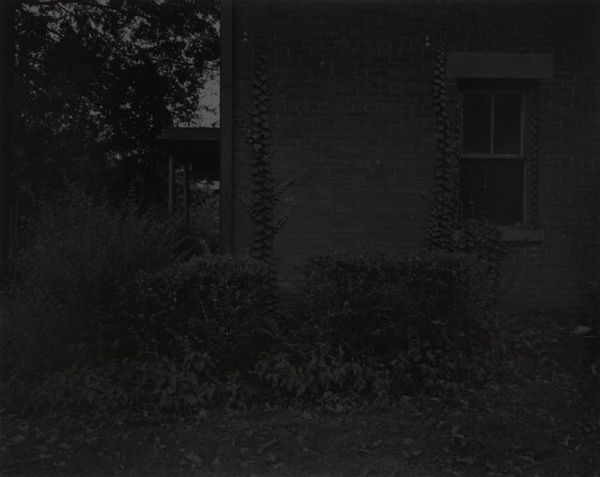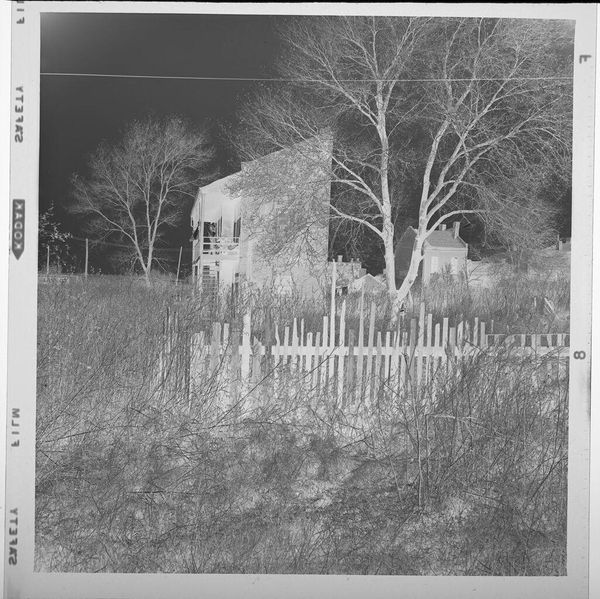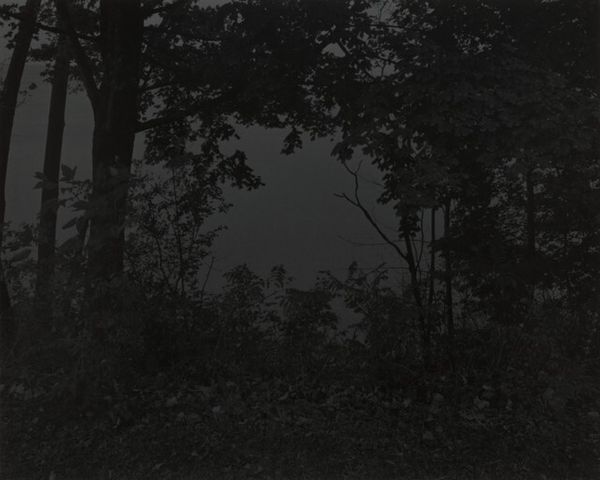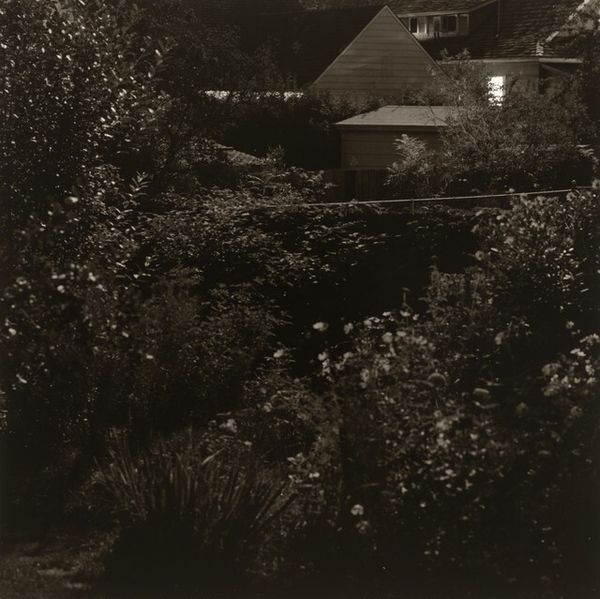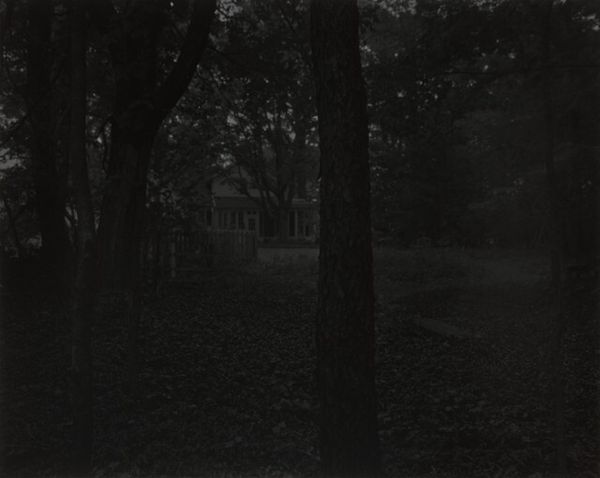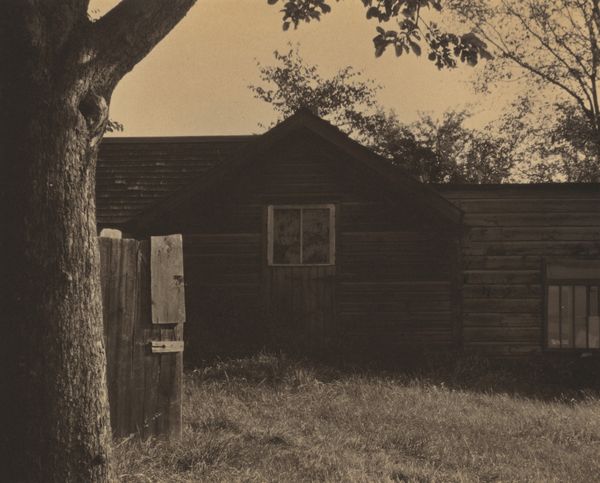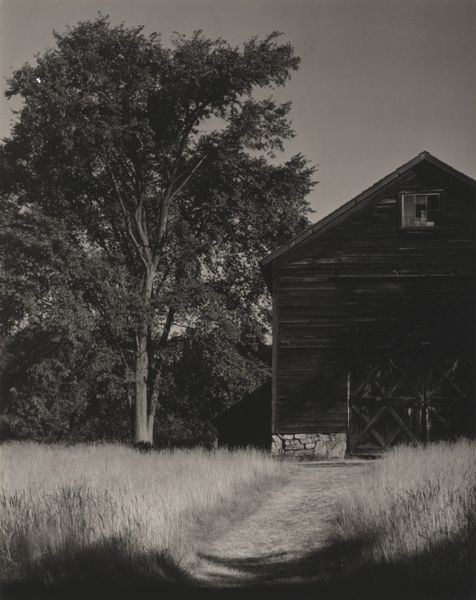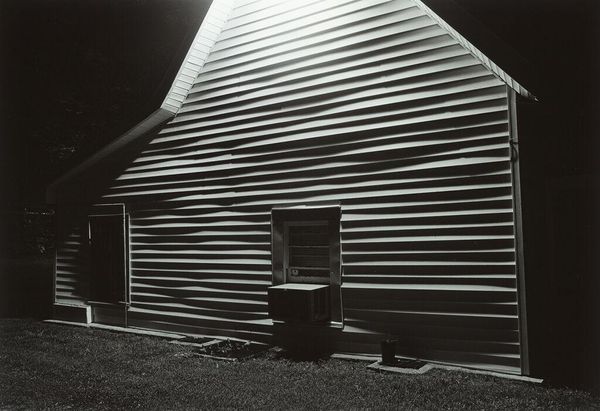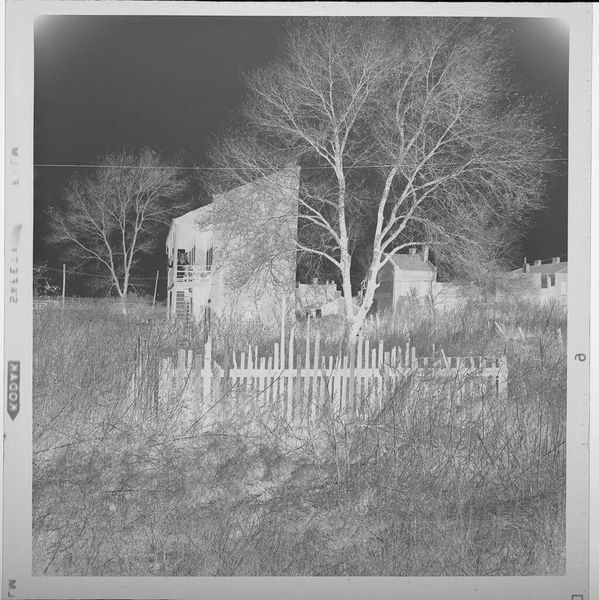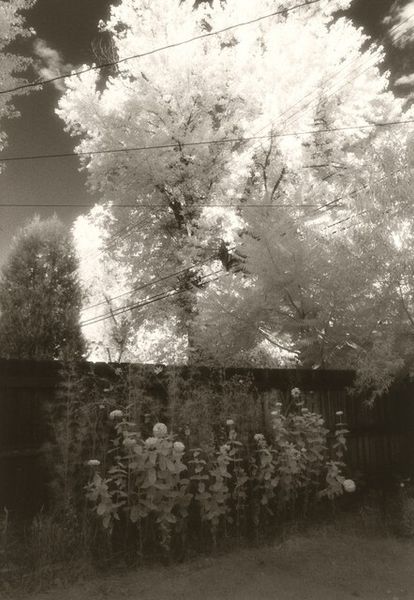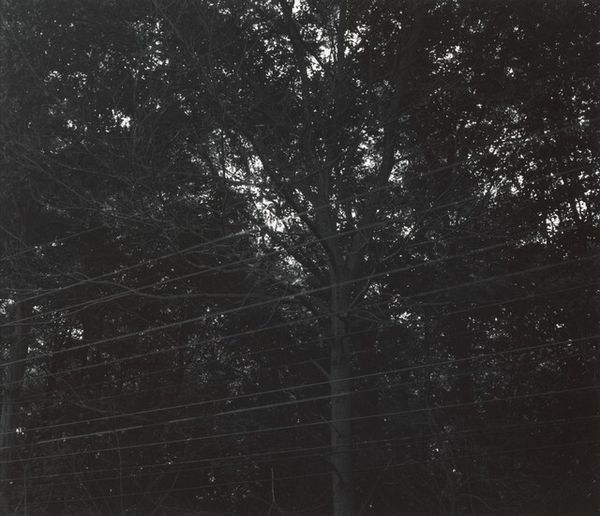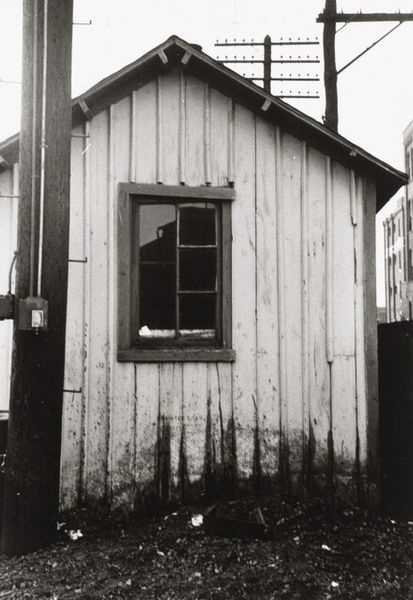
plein-air, photography
#
plein-air
#
landscape
#
photography
#
cityscape
#
realism
Dimensions: image: 44.5 × 55.5 cm (17 1/2 × 21 7/8 in.) sheet: 50.8 × 60.4 cm (20 × 23 3/4 in.)
Copyright: National Gallery of Art: CC0 1.0
Curator: Here we have Dawoud Bey's "Untitled #1 (Picket Fence and Farmhouse)," a photograph created in 2017. It's quite striking, isn't it? Editor: It's heavy. Like a faded dream clinging to a not-so-distant past. The deep grays give everything this overwhelming, almost suffocating, weight. Curator: Absolutely. The image evokes so many associations. The picket fence itself, historically, embodies ideals of the American dream: domesticity, safety, prosperity. But what happens when that symbol is drained of its color, set against this backdrop of twilight or encroaching darkness? Editor: It feels like a challenge, or even an unraveling. Like that white picket fence is guarding something that's already been lost. The shadows practically consume the house in the background. Curator: Exactly. Notice how Bey positions us, the viewers. We're on the outside, looking in. But the image resists offering easy comfort or nostalgia. The contrast is so strong it looks like this shot was taken on a somber day in autumn or during an impending storm. Editor: Which adds another layer, doesn't it? We're positioned as voyeurs. It begs the question of what the photograph protects; or what it refuses to show us, hiding in plain sight, with no hint of pleasantries. Curator: You touched on it. These symbols are potent. Bey understands the cultural baggage they carry, particularly the picket fence in America. In psychology, a fence is an icon for defensive barriers. But in this picture, the fence becomes a haunting figure that simultaneously embodies idyllic security and alienating exclusion. What seems welcoming also whispers something far more unsettling. Editor: It’s funny; seeing this through Bey’s lens made me realize how often we fail to look at these everyday images in that light. These fences have always stood on American soil—how oblivious are we to what goes on within and without their frames? Curator: It's a reminder of the layers of meaning embedded in familiar forms, a glimpse into the shifting sands of the American landscape. Editor: A truly evocative piece—one that leaves you pondering long after you've turned away.
Comments
No comments
Be the first to comment and join the conversation on the ultimate creative platform.
